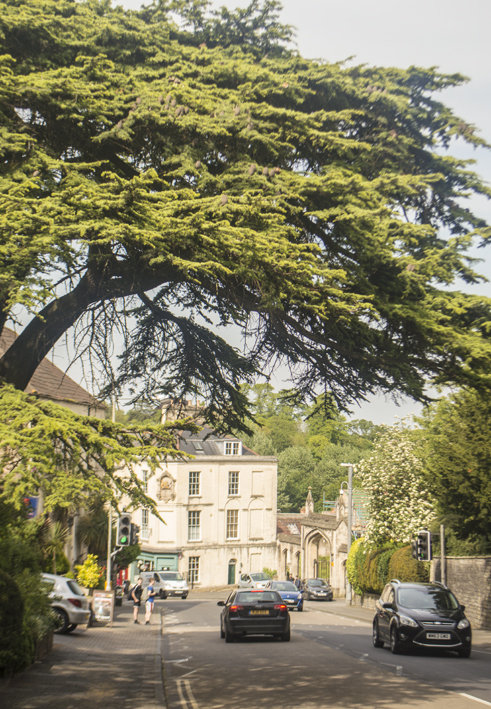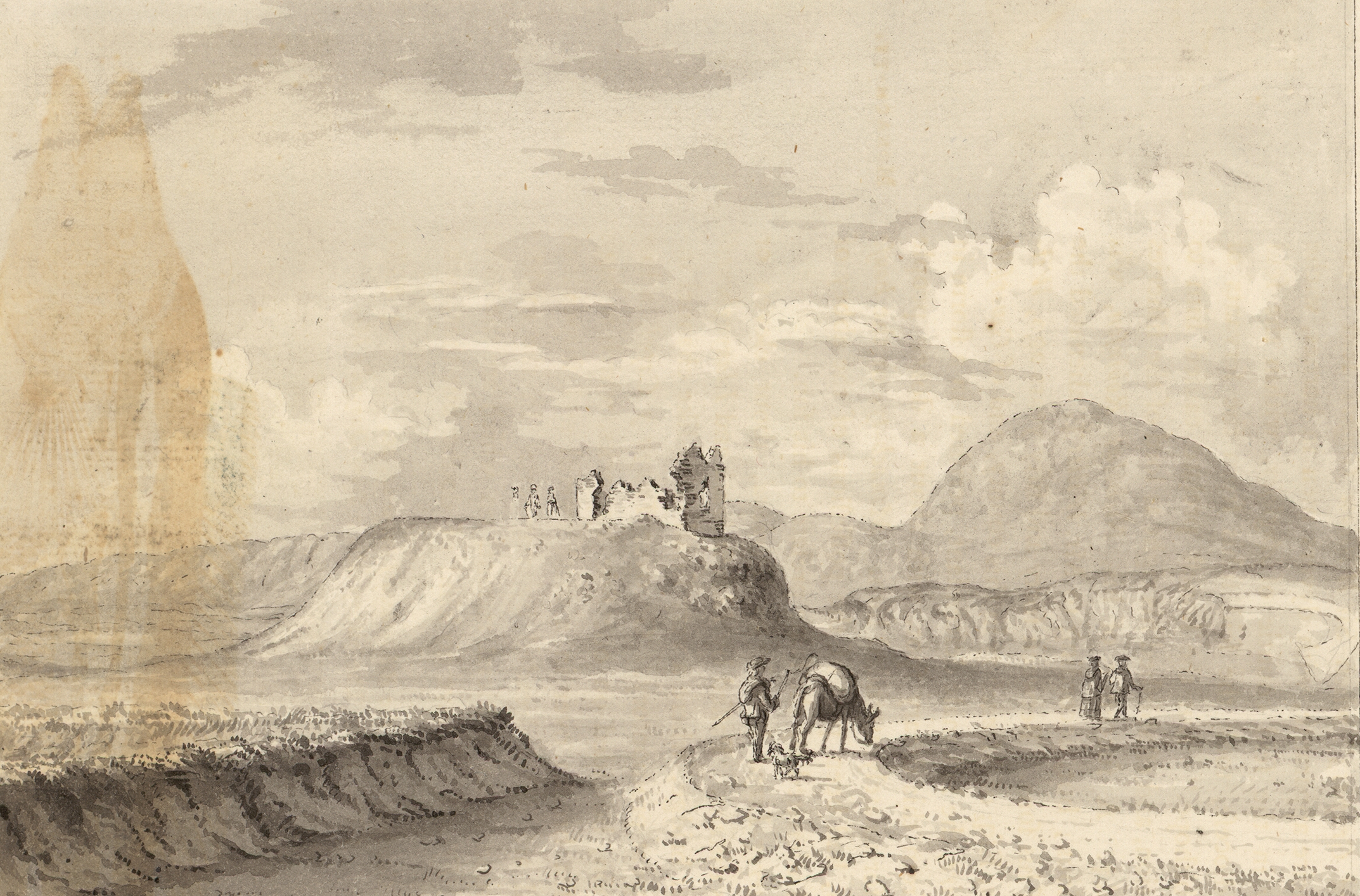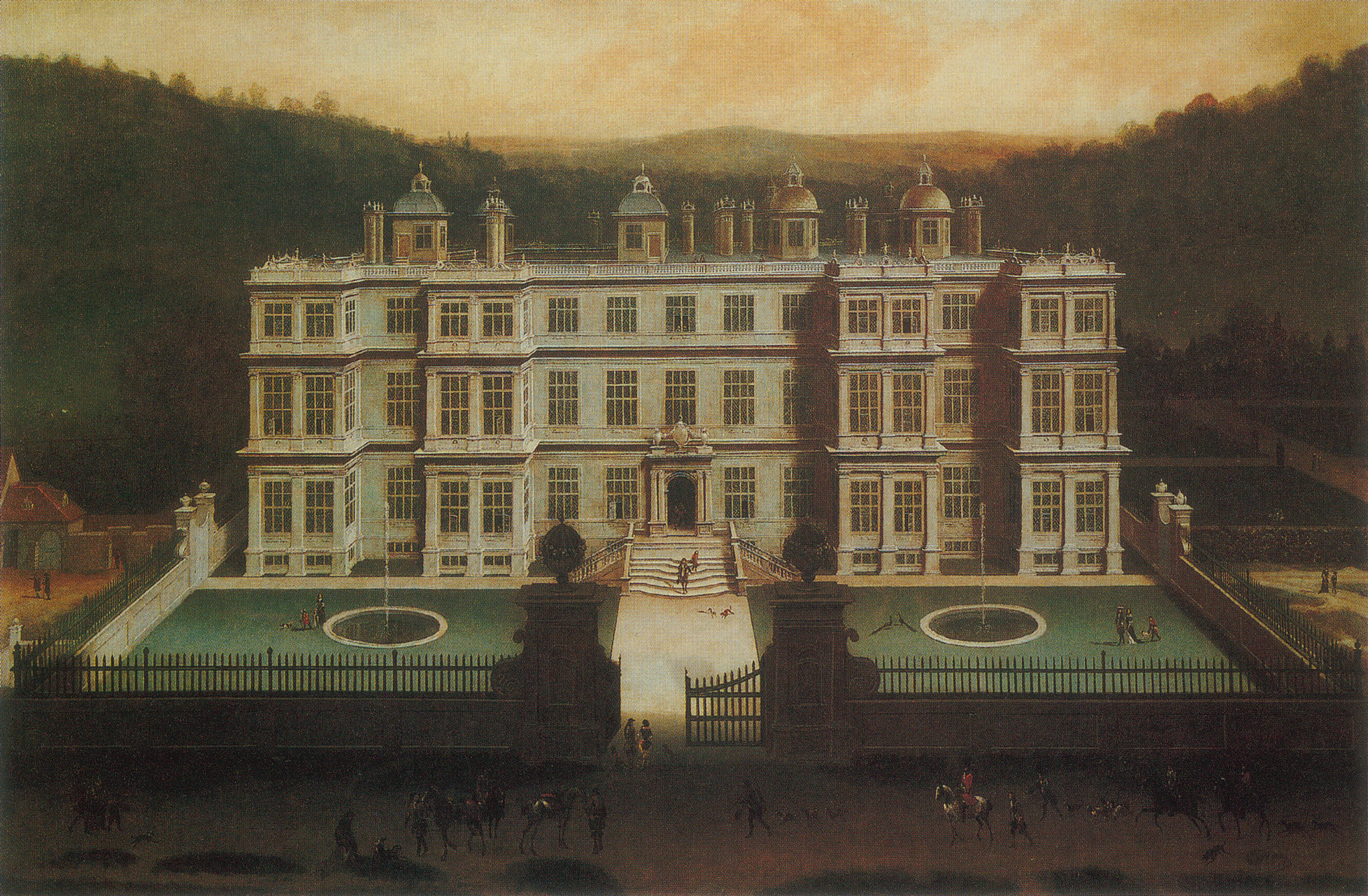|
Thomas Bunn, Frome
Thomas Bunn (1767-–1853), gentleman and philanthropist, was a man of independent means who devoted his energies to improving his native town of Frome. The Bunn Family William Bunn was a tallow chandler who had six children with his wife Joan between 1679 and 1689. His third son, Thomas (born 1684) became prosperous as a dyer, again having five children, of whom the three youngest died in childhood. The elder surviving son was James (1726-1759) who became a solicitor and steward to Sir Richard Bampfylde, but who died unexpectedly young. The younger son was Thomas (1729-1775) who became a doctor and apothecary. He had four children, Susannah (1762-1784), Thomas, Jane (1769-1862) and Arundel (1771-1845). He bought properties along Cork Street in 1757; there he built the substantial Monmouth House in 1770 and its stables, as well as other investments in the area. Portraits of James and Thomas may seen in the Frome Museum. He died of fever when Thomas was nine. My father ... [...More Info...] [...Related Items...] OR: [Wikipedia] [Google] [Baidu] |
Frome
Frome ( ) is a town and civil parish in eastern Somerset, England. The town is built on uneven high ground at the eastern end of the Mendip Hills, and centres on the River Frome. The town, about south of Bath, is the largest in the Mendip district of Somerset and is part of the parliamentary constituency of Somerton and Frome. The population was 28,559 in 2021. Frome was one of the largest towns in Somerset until the Industrial Revolution, and was larger than Bath from AD 950 until 1650. The town first grew due to the wool and cloth industry; it later diversified into metal-working and printing, although these have declined. The town was enlarged during the 20th century but retains a large number of listed buildings, and most of the centre falls within a conservation area. In the 2011 census, the population was given as 26,203. The town has road and rail transport links and acts as an economic centre for the surrounding area. It provides a centre for cultural and sportin ... [...More Info...] [...Related Items...] OR: [Wikipedia] [Google] [Baidu] |
Longleat
Longleat is an English stately home and the seat of the Marquesses of Bath. A leading and early example of the Elizabethan prodigy house, it is adjacent to the village of Horningsham and near the towns of Warminster and Westbury in Wiltshire, and Frome in Somerset. The Grade I listed house is set in of parkland landscaped by Capability Brown, with of let farmland and of woodland, which includes a Center Parcs holiday village. It was the first stately home to open to the public, and the Longleat estate has the first safari park outside Africa and other attractions including a hedge maze. The house was built by Sir John Thynne and designed mainly by Robert Smythson, after Longleat Priory was destroyed by fire in 1567. It took 12 years to complete and is widely regarded as one of the finest examples of Elizabethan architecture in Britain. It continues to be the seat of the Thynn family, who have held the title of Marquess of Bath since 1789; the eighth and present Marquess is ... [...More Info...] [...Related Items...] OR: [Wikipedia] [Google] [Baidu] |
Sheppard Family (clothiers)
The Sheppard family dominated cloth manufacture in Frome, Somerset, England. They were the first to introduce machinery into the area and in the first quarter of the 19th century were the largest employers. First names of the Sheppard family occur again and again down the centuries: John, Edward, William, Thomas, Eleanor, Walter, George. In the town their name is attached to three places: the Emma Sheppard Centre for dementia day care, Sheppards Barton where there is a plaque at the south end of the barton and Network Rail's Sheppards Overbridge on the lane leading to Garston Farm once owned by them. John Sheppard (c1614-1675) ''founder of the family'' John was the first of his surname to be directly associated with the cloth industry in Frome. There were earlier Sheppards in Frome, renting land in the 16th century on Rodden Down, but no pedigree can be established. His trade was as a cardboard maker - making boards for carding wool. Spinners prepared the wool by combing ... [...More Info...] [...Related Items...] OR: [Wikipedia] [Google] [Baidu] |
Thomas Sheppard (MP)
Thomas Sheppard (1766 – 1 June 1858) was a politician in England. A grandson of the wealthy clothier, William Sheppard (1709-1759), he was elected at the 1832 general election as the Member of Parliament (MP) for the newly enfranchised borough of Frome in Somerset, standing as a Whig. He was re-elected in 1835 as a Conservative, and held the seat until he stood down from the House of Commons at the 1847 general election. Frome was given the right to elect its own member of Parliament, one of 67 new constituencies, by the Reform Act 1832. This Act removed rotten boroughs’ like Old Sarum (with 3 houses and 7 voters to elect 2 MPs) and included for the first time new electors such as small landowners, tenant farmers and shopkeepers; voters were defined as male persons, so women were formally excluded. The election was disputed by two well-known local men: Sir Thomas Champneys and Sheppard, a Tory and a Radical or Whig respectively. Champneys was an acknowledged slave owne ... [...More Info...] [...Related Items...] OR: [Wikipedia] [Google] [Baidu] |
Primitive Methodism
The Primitive Methodist Church is a Methodist Christian denomination with the holiness movement. It began in England in the early 19th century, with the influence of American evangelist Lorenzo Dow (1777–1834). In the United States, the Primitive Methodist Church had eighty-three parishes and 8,487 members in 1996. In Great Britain and Australia, the Primitive Methodist Church merged with other denominations, to form the Methodist Church of Great Britain in 1932 and the Methodist Church of Australasia in 1901. The latter subsequently merged into the Uniting Church in Australia in 1977. Beliefs The Primitive Methodist Church recognizes the dominical sacraments of Baptism and Holy Communion, as well as other rites, such as Holy Matrimony. History United Kingdom The leaders who originated Primitive Methodism were attempting to restore a spirit of revivalism as they felt was found in the ministry of John Wesley, with no intent of forming a new church. The leaders were Hugh Bourn ... [...More Info...] [...Related Items...] OR: [Wikipedia] [Google] [Baidu] |
Church Of England
The Church of England (C of E) is the established Christian church in England and the mother church of the international Anglican Communion. It traces its history to the Christian church recorded as existing in the Roman province of Britain by the 3rd century and to the 6th-century Gregorian mission to Kent led by Augustine of Canterbury. The English church renounced papal authority in 1534 when Henry VIII failed to secure a papal annulment of his marriage to Catherine of Aragon. The English Reformation accelerated under Edward VI's regents, before a brief restoration of papal authority under Queen Mary I and King Philip. The Act of Supremacy 1558 renewed the breach, and the Elizabethan Settlement charted a course enabling the English church to describe itself as both Reformed and Catholic. In the earlier phase of the English Reformation there were both Roman Catholic martyrs and radical Protestant martyrs. The later phases saw the Penal Laws punish Ro ... [...More Info...] [...Related Items...] OR: [Wikipedia] [Google] [Baidu] |
Baptists
Baptists form a major branch of Protestantism distinguished by baptizing professing Christian believers only ( believer's baptism), and doing so by complete immersion. Baptist churches also generally subscribe to the doctrines of soul competency (the responsibility and accountability of every person before God), ''sola fide'' (salvation by just faith alone), ''sola scriptura'' (scripture alone as the rule of faith and practice) and congregationalist church government. Baptists generally recognize two ordinances: baptism and communion. Diverse from their beginning, those identifying as Baptists today differ widely from one another in what they believe, how they worship, their attitudes toward other Christians, and their understanding of what is important in Christian discipleship. For example, Baptist theology may include Arminian or Calvinist beliefs with various sub-groups holding different or competing positions, while others allow for diversity in this matter within t ... [...More Info...] [...Related Items...] OR: [Wikipedia] [Google] [Baidu] |
Christ Church Frome
Jesus, likely from he, יֵשׁוּעַ, translit=Yēšūaʿ, label= Hebrew/ Aramaic ( AD 30 or 33), also referred to as Jesus Christ or Jesus of Nazareth (among other names and titles), was a first-century Jewish preacher and religious leader; he is the central figure of Christianity, the world's largest religion. Most Christians believe he is the incarnation of God the Son and the awaited Messiah (the Christ) prophesied in the Hebrew Bible. Virtually all modern scholars of antiquity agree that Jesus existed historically. Research into the historical Jesus has yielded some uncertainty on the historical reliability of the Gospels and on how closely the Jesus portrayed in the New Testament reflects the historical Jesus, as the only detailed records of Jesus' life are contained in the Gospels. Jesus was a Galilean Jew who was circumcised, was baptized by John the Baptist, began his own ministry and was often referred to as "rabbi". Jesus debated with f ... [...More Info...] [...Related Items...] OR: [Wikipedia] [Google] [Baidu] |
Bath Royal Literary And Scientific Institution
The Bath Royal Literary and Scientific Institution (also known as BRLSI) is an educational charity based in Bath, England. It was founded in 1824 and provides a museum, an independent library, exhibition space, meeting rooms and a programme of public lectures, discussion groups and exhibitions related to science, the arts and current affairs. Origins: Science Lecturing in Georgian Bath The early eighteenth century witnessed a vogue for science lecturing in the wake of the pioneering endeavours of scientists such as Isaac Newton, Edmund Halley and Robert Hooke and the founding of the Royal Society in 1662. Bath had long attracted students of chemistry and medicine keen to legitimise claims for the curative properties of its hot spring waters, and soon the patronage of the aristocracy heralded the first wave of the city's Georgian popularity. The first commercial public science (or natural philosophy) lecture was presented by John Theophilus Desaguliers in 1724, explaining the phe ... [...More Info...] [...Related Items...] OR: [Wikipedia] [Google] [Baidu] |
William Wilberforce
William Wilberforce (24 August 175929 July 1833) was a British politician, philanthropist and leader of the movement to abolish the slave trade. A native of Kingston upon Hull, Yorkshire, he began his political career in 1780, eventually becoming an independent Member of Parliament (MP) for Yorkshire (1784–1812). In 1785, he became an evangelical Christian, which resulted in major changes to his lifestyle and a lifelong concern for reform. In 1787, Wilberforce came into contact with Thomas Clarkson and a group of activists against the slave trade, including Granville Sharp, Hannah More and Charles Middleton. They persuaded Wilberforce to take on the cause of abolition, and he soon became the leading English abolitionist. He headed the parliamentary campaign against the British Slave Trade for 20 years until the passage of the Slave Trade Act of 1807. Wilberforce was convinced of the importance of religion, morality and education. He championed causes and campaigns such as t ... [...More Info...] [...Related Items...] OR: [Wikipedia] [Google] [Baidu] |
Cedrus Libani
''Cedrus libani'', the cedar of Lebanon or Lebanese cedar (), is a species of tree in the genus cedrus, a part of the pine family, native to the mountains of the Eastern Mediterranean basin. It is a large evergreen conifer that has great religious and historical significance in the cultures of the Middle East, and is referenced many times in the literature of ancient civilisations. It is the national emblem of Lebanon and is widely used as an ornamental tree in parks and gardens. Description ''Cedrus libani'' can reach in height, with a massive monopodial columnar trunk up to in diameter.Farjon 2010, p. 258 The trunks of old trees ordinarily fork into several large, erect branches.Masri 1995 The rough and scaly bark is dark grey to blackish brown, and is run through by deep, horizontal fissures that peel in small chips. The first-order branches are ascending in young trees; they grow to a massive size and take on a horizontal, wide-spreading disposition. Second-order branche ... [...More Info...] [...Related Items...] OR: [Wikipedia] [Google] [Baidu] |
Bunn Pillar
Bunn is a surname. Notable people with the surname include: * Alfred Bunn (1796–1860), English theatrical manager *Bennie M. Bunn (1907–1943), American Marine officer killed in World War II *Beverly Atlee Bunn, birth name of American author Beverly Cleary * Fru T. Bunn, fictional character from ''Viz'' * George Bunn (other) * Jim Bunn (b. 1956), former U.S. Congressman from Oregon * John Bunn (basketball), American basketball coach * John Whitfield Bunn and Jacob Bunn, American financiers, industrialists, and friends of Abraham Lincoln * Leon Bunn (b. 1992), German professional boxer * Olivia Bunn (b. 1979), Australian equestrian * Romanzo Bunn, United States federal judge *Stan Bunn (b. 1946), American state legislator in Oregon *Tom Bunn, American state legislator in Oregon *William M. Bunn, American politician See also * Bunn-O-Matic Corporation, Illinois-based manufacturer of coffee equipment founded by George R. Bunn Jr. and owner of the ''BUNN'' brand *Bu ... [...More Info...] [...Related Items...] OR: [Wikipedia] [Google] [Baidu] |







